Every year in large cities around the world there are more and more high-rise buildings and less and less space for greenery.
Nevertheless, to walk barefoot on the grass in the morning or drink a cup of tea in the shade of shrubs or trees, it is not necessary to have a country house. The struggle for the preservation and cleanliness of the environment has not spared the architects - they have masterfully learned how to integrate nature into urban conditions. At the same time, as it turned out, the size and budget do not matter: absolutely everything is amenable to gardening. Including skyscrapers.
Eco-friendliness, functionality and striking appearance — we have collected for you the most impressive high-rise buildings with green facades in different parts of our planet.
ACROSS Fukuoka in Fukuoka (Japan)

Built in 1995, ACROS Fukuoka is a bright representative of "green architecture", one of the best green structures in the world. It is thanks to this object that many tourists from different countries know the Japanese city of Fukuoka.
ACROSS Fukuoka is the only building on the planet with a huge roof garden! The name of this masterpiece of "green" architecture – ACROSS Fukuoka - stands for Asian Crossroads Over the Sea (Asian crossroads over the sea). Fukuoka, as it is easy to guess, indicates the location – the capital of the prefecture of the same name.
The project was developed by the Argentine architect Emilio Ambash. He took into account the wishes of local residents who did not want to lose the last green corner in this place of the city. Ambash has created a house-park that seems to draw inspiration from the picturesque green landscapes.

On the territory of the facility, more than 35 thousand plants, a total of 120 species, including a variety of trees and shrubs, are drawn to the sun! They not only form a beautiful garden where you can walk, enjoying nature, but also allow you to create a comfortable temperature for a person inside a huge building. The green roof is also able to collect rainwater and thereby support the life of plants, as well as birds and insects living there.
Under the manicured terraces, there is more than 1 million m2 of office space, as well as an exhibition hall, a museum, a theater stage with 2000 seats, a conference hall, several underground parking levels and retail areas.
Bosco Verticale in Milan (Italy)

The Bosco Verticale residential complex is one of the most impressive in the world. It is located in the modern quarter of Porta Nuova. Translated from Italian, Bosco Verticale means "vertical forest". The complex, designed by the architectural firm Stefano Boeri Architetti, was built in 2014. The ensemble of two residential towers is decorated with trees, shrubs, flowers.
At the same time, the plants and trees here are not only for beauty. The complex has become a real home for many birds, butterflies and other small animals. Vegetation helps filter out dust from the city air and creates a cozy microclimate. Also, green spaces reduce the radiation background. The most curious thing is that the costs of landscaping the complex raised the cost of construction of Bosco Verticale by only 5%. Given the huge benefits, the project has clearly paid off!

In total, about 900 trees and 5,000 shrubs were planted on the facade of the buildings. Gardeners-climbers take care of the plants, for whom special cranes are installed on the roofs of houses. In 2015, the building received the status of the best skyscraper on the planet according to the Illinois Institute of Technology in Chicago. Since 2017, an apartment in the residential complex has been put up for rent on the Airbnb service. The cost of one day's stay is about 180 euros.
Agora Garden Tower in Taipei (Taiwan)

Agora Garden Tower is another ecological residential tower. The 21-storey building is located in Taipei City. Everything is unusual in this unique architectural creation – the shape of the building in the form of a DNA spiral, and tens of thousands of trees on all floors of the tower, and the use of only harmless and recycled materials during construction.
The author of an architectural masterpiece, a famous Belgian architect Vincent Callebout, was inspired by the "twists" of the DNA helix, which he expressed in the forms of a non-standard building. The innovative project of the tower won competitions and received three prestigious awards: the International Architecture Award (Chicago, 2014), the Design Innovation Award (Chicago, 2014) and the World Architecture Festival Award (Singapore, 2015).

Agora Garden Tower is not just a beautiful and unusual design project. This is really an architectural attempt to find "the right symbiosis between man and nature." The design of the tower was developed taking into account the ecological and climatic conditions on a specific urban plot of land. About 23 thousand live trees have been planted throughout the skyscraper, and residents of the eco-friendly tower have the opportunity to grow vegetables and fruits on their own on "green" balconies.
The architect took into account the movement of the Sun, conducted thermal and wind analyses to fine-tune the design and optimize natural lighting and ventilation throughout the building. In addition, according to calculations, large "green" areas allow the building to absorb about 130 tons of carbon dioxide annually. In addition to the structure, an original canopy of solar panels is mounted on the roof. To date, Agora Garden Tower has no direct analogues in the country and serves as an example of a successful project taking into account the protection of nature and control over the expenditure of resources.
One Central Park in Sydney (Australia)
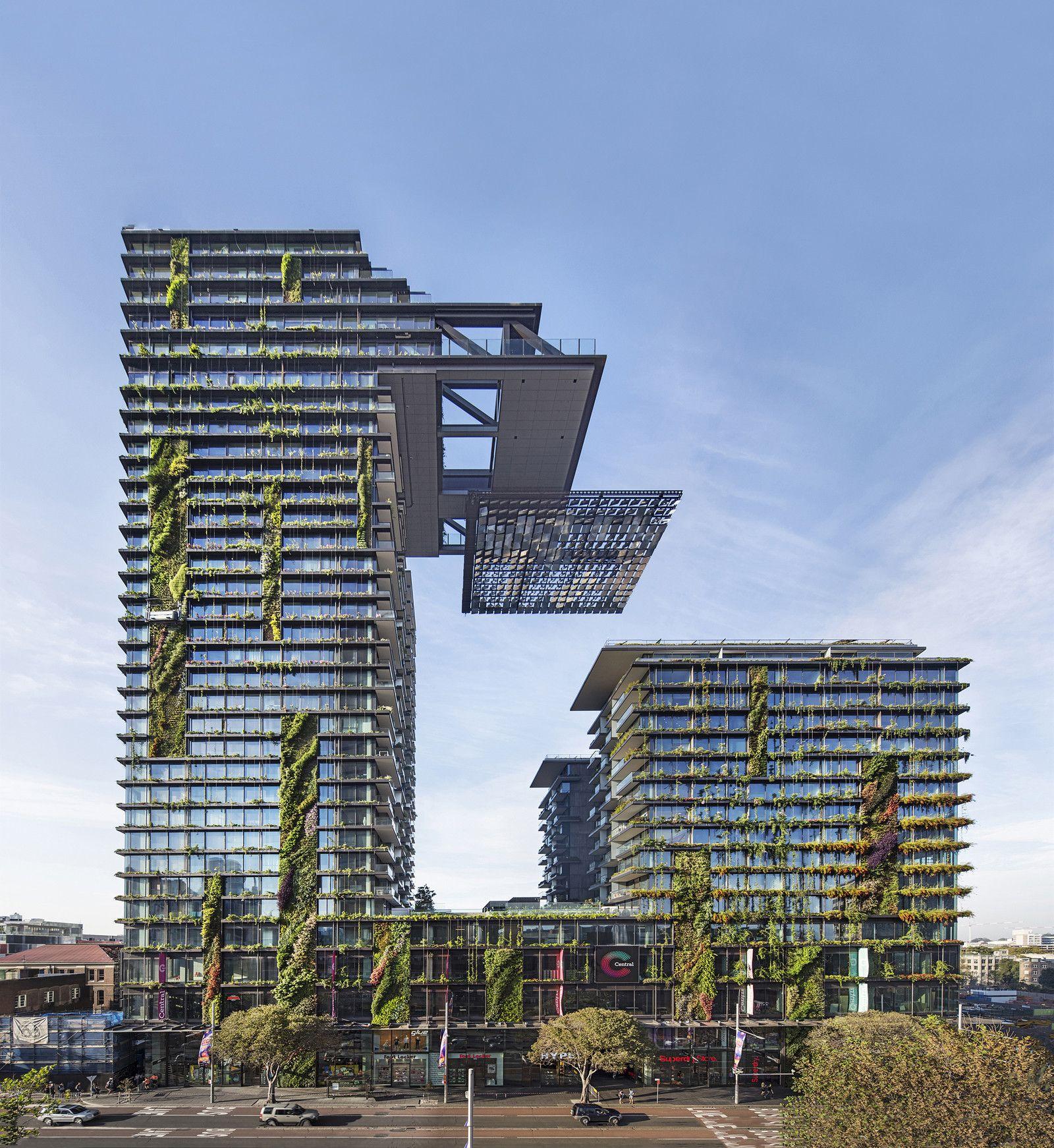
Multifunctional complex One Central Park in Sydney, designed by French architect Jean Nouvel together with a landscape designer Patrick Blank, offers its inhabitants to settle in the very center of the city, remaining in harmony with nature. The building was inaugurated in 2014. Central Park is a real green oasis in the midst of a bustling metropolis.
Greenery covers almost half of the facade of the high-rise: in addition to the "green wall" in the entire 150-meter height of the building, Blanc installed 5,000 pots with plants on balconies and supports. In total, 350 different types of Australian flowers and plants were planted, which create a colorful picturesque composition.
Each of them found the most suitable place, based on the most suitable conditions: the most light-loving and wind-resistant turned out to be at the top, climbing plants wrapped around columns and balcony railings, greenery was planted below, which loves shade and at the same time easily tolerates the constant touch of curious passers-by.

The green walls are automatically moistened with filtered sewage from the residential complex. Plants in boxes provide shading that is relevant in the Australian climate, and allow you to save on air conditioning. The facade and the building form a single ecosystem; it is not just an expensive decoration. Like the famous Central Park in New York, this complex provides a pleasant and quiet meeting place where you can relax and unwind with friends and family among the green groves or just sit on the lawns, having a picnic in the fresh air.
On the territory of 64 thousand m2 there are also chess boards, an open-air cinema, various fairs and venues for music festivals.
Oasia Hotel Downtown Singapore

Oasia Hotel Downtown is a landmark project of WOHA Architects, where architects sought to adapt classic glass and concrete skyscrapers in hot tropical countries. The problem is that such structures heat up quickly at high ambient temperatures. Their operation requires powerful and expensive air conditioning systems.
To further cool the thirty-storey building with an aluminum facade, the architects wrapped it with a lush grid of twenty-one types of vines. They are complemented by 33 species of plants and tropical trees located on the terraces of the hotel.
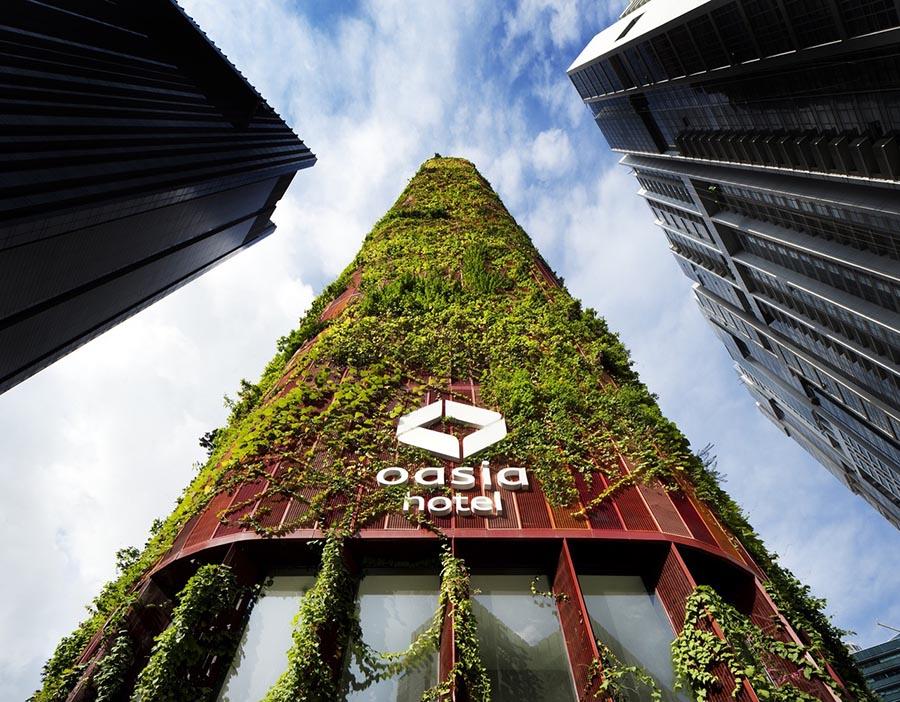

It is worth adding that the natural cooling of the tower is also helped by its design feature - the presence of through openings. Through these niches with green terraces, air circulates, and its movement does not allow the building to overheat. The red color of the aluminum structure was not chosen by chance. It creates a good contrast with the lush greenery and coolness of the blue sky, which makes the building stand out against the background of dim neighboring skyscrapers. It resembles the warm shades of fruit among the green foliage.
It is important that a fairly easy-to-use system has been created for planting and caring for plants. The construction took about five years and cost 95 million US dollars.
As for Cyprus, the most beautiful and green building of the island today is located in the capital - Nicosia.
The brainchild of French architect Jean Nouvel called Tower 25 is the hallmark of the city.
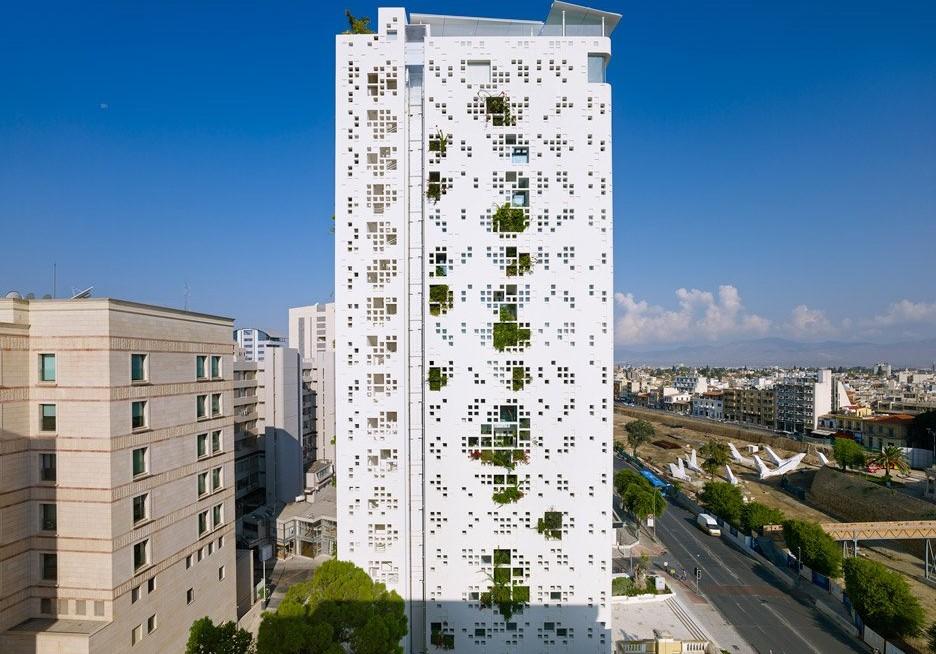
From a distance, the building looks like a parallelepiped of perforated white marble with lush greenery emerging from the slots against a bright blue sky. The lush Mediterranean vegetation creates a charming color contrast with the boiling whiteness of the building. It seems that the plants on the skyscraper live their own lives, and in all three dimensions.
The creator of Tower 25 calls the project a "natural solar breeze". The southern facade of the building seems to "splash out" plants that tend to the sun and light. This produces an incredible effect both from afar and up close.
The snow-white walls of the western and eastern sides of the building seem to be pierced by square holes scattered on the surface, forming geometric shapes and pixel patterns fascinating with their asymmetry, filled with beautiful living plants that serve as a natural shield from sunlight and protect the walls of the building from overheating, thereby keeping the apartments cool.
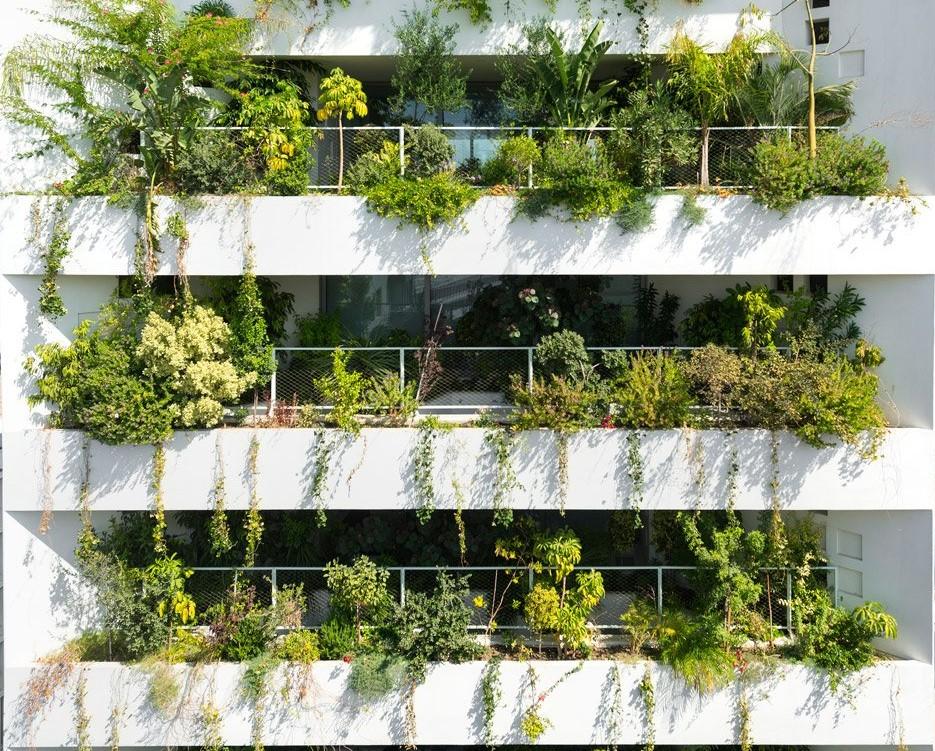
The northern facade is designed in a minimalist style - minimalism came out on top here: balconies with a length of the entire facade, strict lines and the same snow-white facing material. The width and depth of the balconies gradually changes from floor to floor. This creates the illusion that the building is not static. It then expands, then narrows, creating the effect of movement and sliding. From a certain angle, it seems that the building is breathing.
It should be noted that all Jean Nouvel's projects combine environmental friendliness, aesthetics and high functionality.
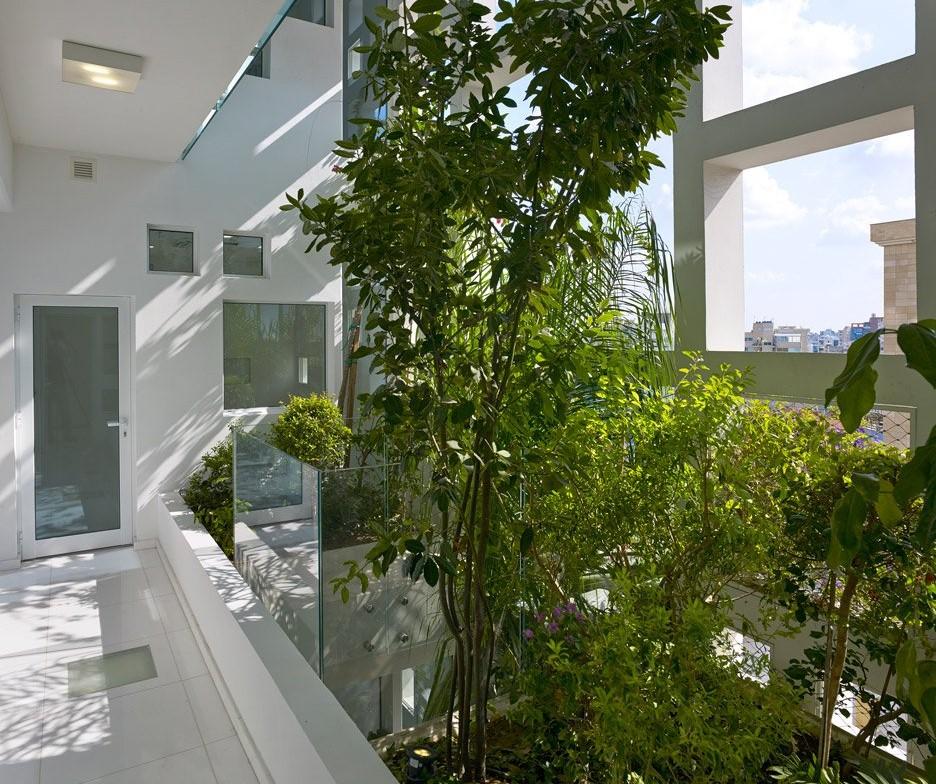
Have you decided to buy a property in Cyprus? Contact DOM! The site offers a huge selection of real estate - residential and commercial. Experienced agency specialists will be happy to help you make the right choice.
Read more:
- Top 10 abandoned villages in Cyprus
- What is the best way to invest in 2021?
- Top 10 most romantic houses in the world
- Top 6 destinations for buying foreign real estate
- Permanent residence included: apartments and houses in Cyprus for 300 thousand euros
- How to certify a lease agreement in Cyprus
- Elite Island Properties: Continuing Middle Eastern traditions in Cyprus

